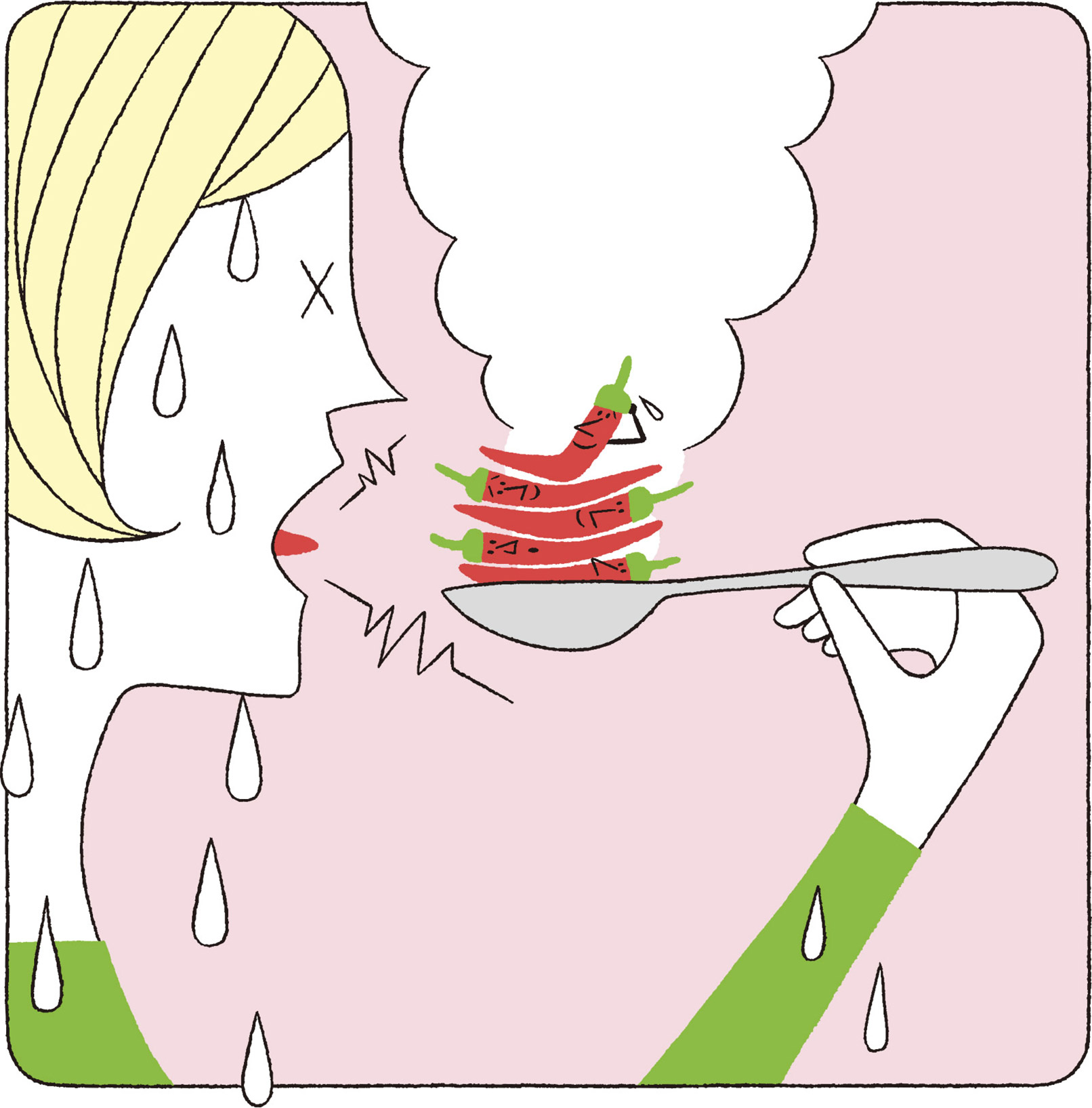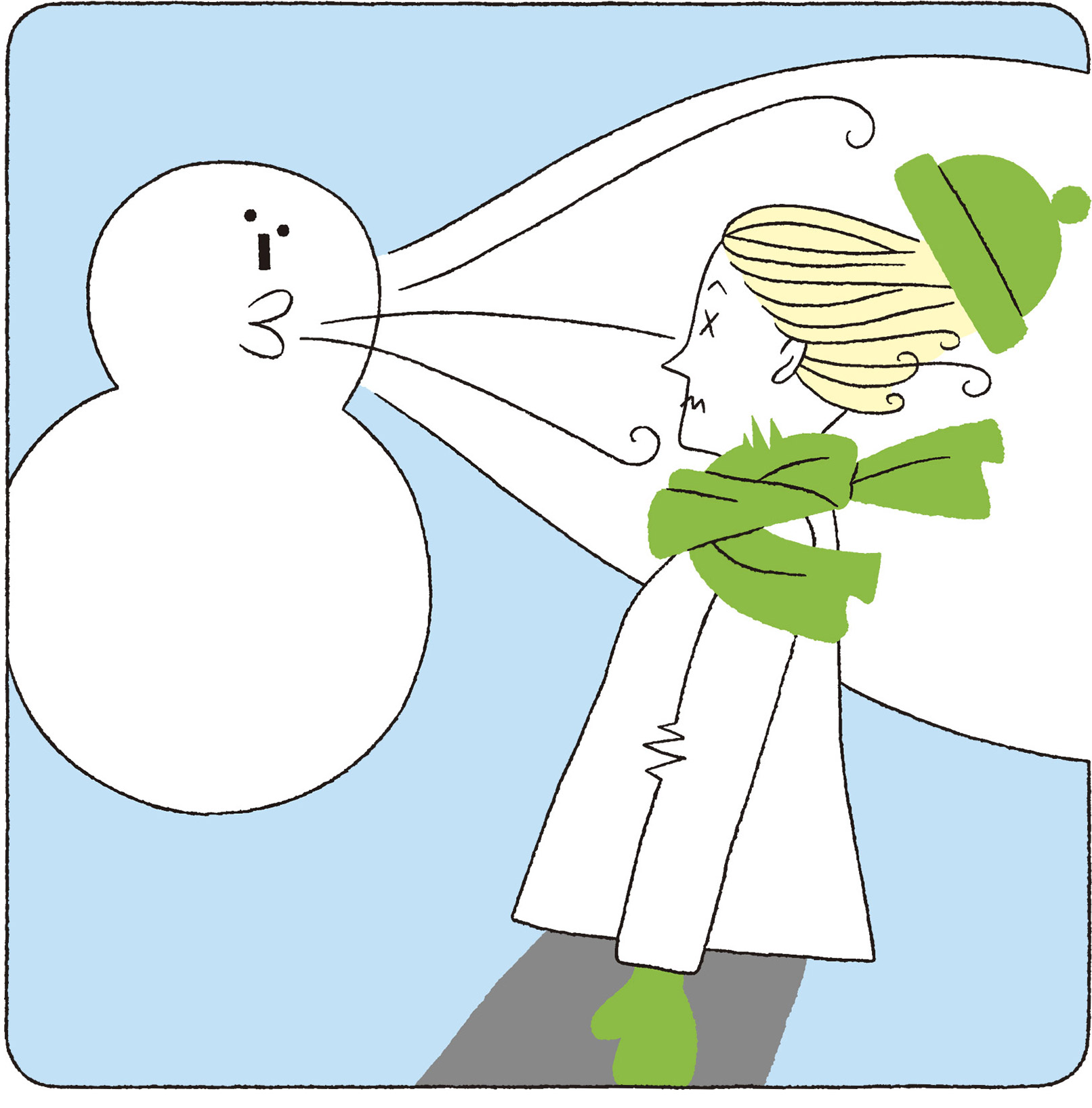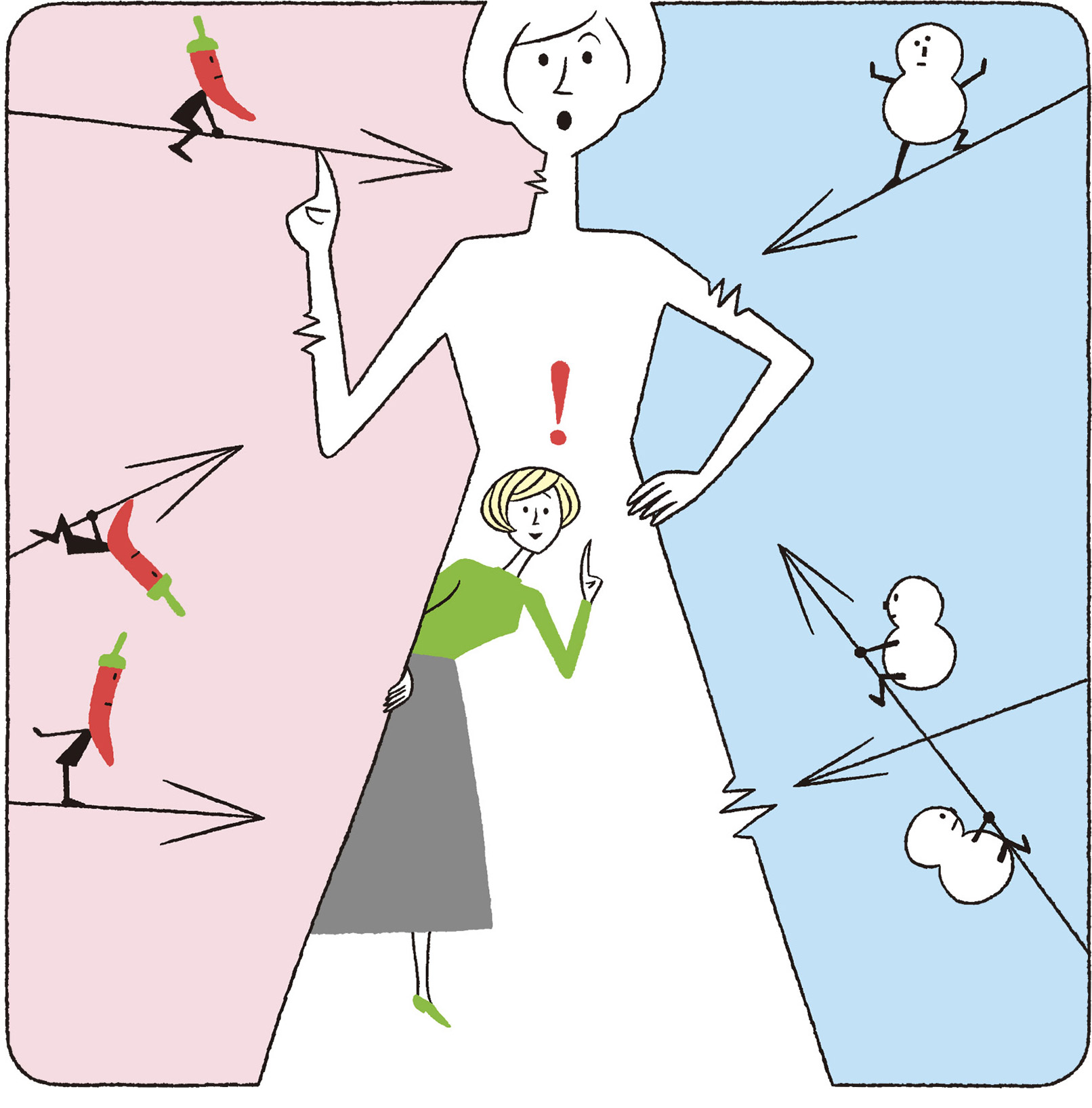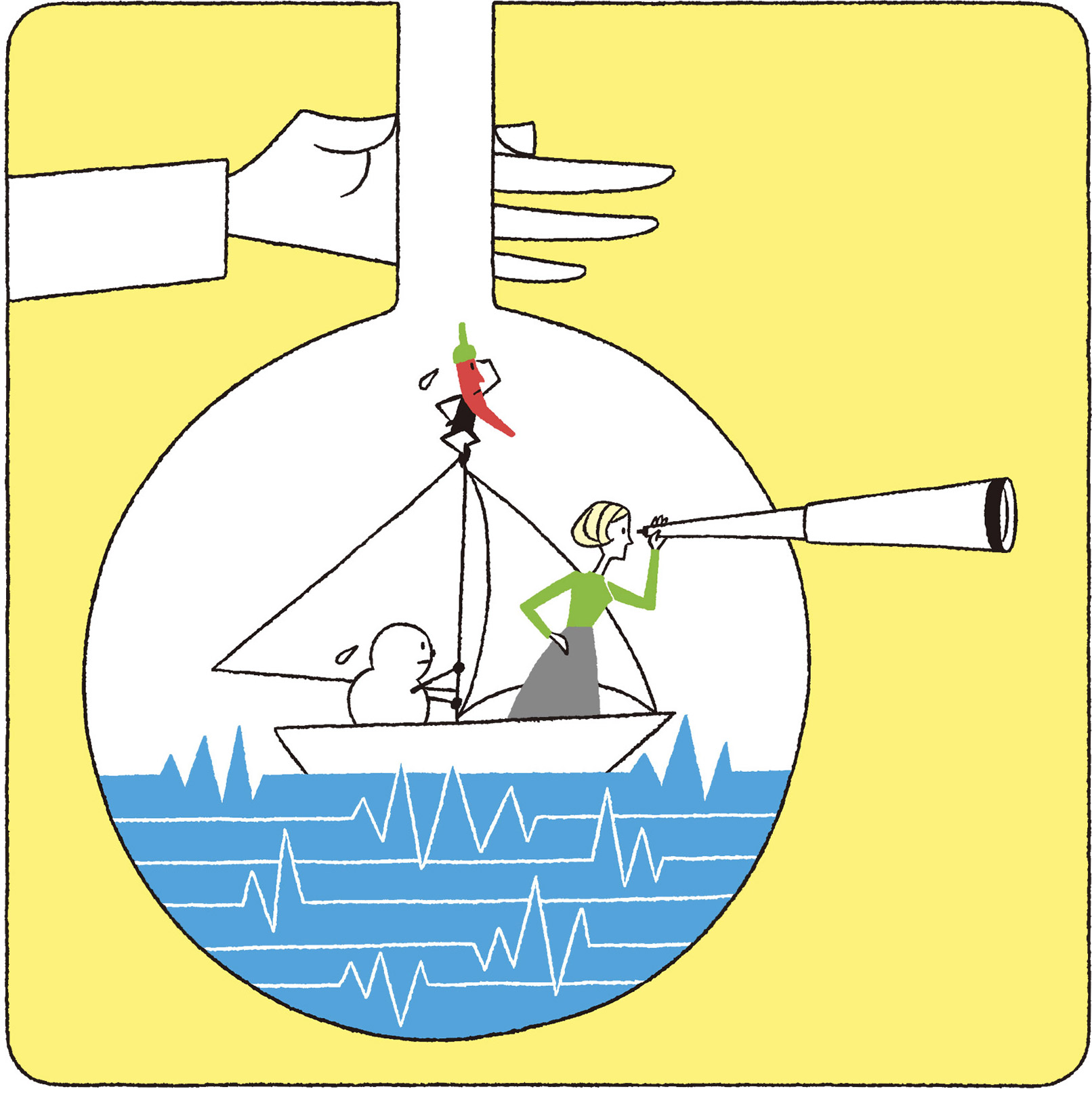Company Information
Gallery
Connection with pain or conformity!? TRP channel is deeply associated with our lives
Why chili burns our mouth when we eat it?
The TRP channel was discovered in 1997. Surprisingly, it was not long ago. Before then, we did not know how we sense thermal stimuli and pain. The research into this body mechanism that matters for life and death has long been nominated for the Nobel Prize since its discovery. Professor Makoto Tominaga, who was working under the instructions of Professor David Julius and now is affiliated with National Institute for Physiological Sciences,*2 commented about this award, “I am really happy to hear the news. It’s finally the day I have been waiting for.”
“Why chili burns our mouth when we eat it?” The research started with this question. We knew that we feel pain when exposed to heat over 43℃. However, we did not know why we feel so. Both capsaicin, a compound found in chili, and noxious heat over 43℃ activate TRPV1 of cell sensors and make us feel pain.
TRP channel gives a hint about relieving pain and enhancing conformity
Since its discovery, research has progressed in the TRP channel of animals in addition to human beings, until it was proved to be activated not only by thermal stimuli but also by various compounds, including mint, wasabi, eucalyptus, and acids, to make us feel hot or cold and to cause or relieve pain.
“Certain compounds activate the TRP channel, potentially relieving pain and enhancing conformity. We may be able to develop pain medicines without side effects or cosmetics that do not sting the eyes and scalp. This discovery can be applied to various fields,” said Professor Tominaga. The TRP channel will suggest ideas of living more safely and comfortably even with the impact of changing environmental conditions.
*2 Division of Cell Signaling, National Institute for Physiological Sciences (NIPS)
Temperature-sensitive TRP channel
-
 illustration: Suzy Amakane
illustration: Suzy AmakaneSurviving the Dreadful Heat of Summer is More Difficult Than Surviving in the Jungle!?
A tropical rain forest is full of danger. Just stay there, and sweat will pour down your face. Japanese Summer is more hotter and damper. The TRP channel gives us a clue about surviving the sweltering summer heat.
▶Read More -
 illustration: Shobu Tsuchiya
illustration: Shobu TsuchiyaSummer Sports and the Fight against a Rise in Body Temperature
In the case of marathon, the deep body temperature of a runner increases to 39℃ after running all the way of 42.195 km. It is important to know the TRP channel and cool the body appropriately after running.
▶Read More -
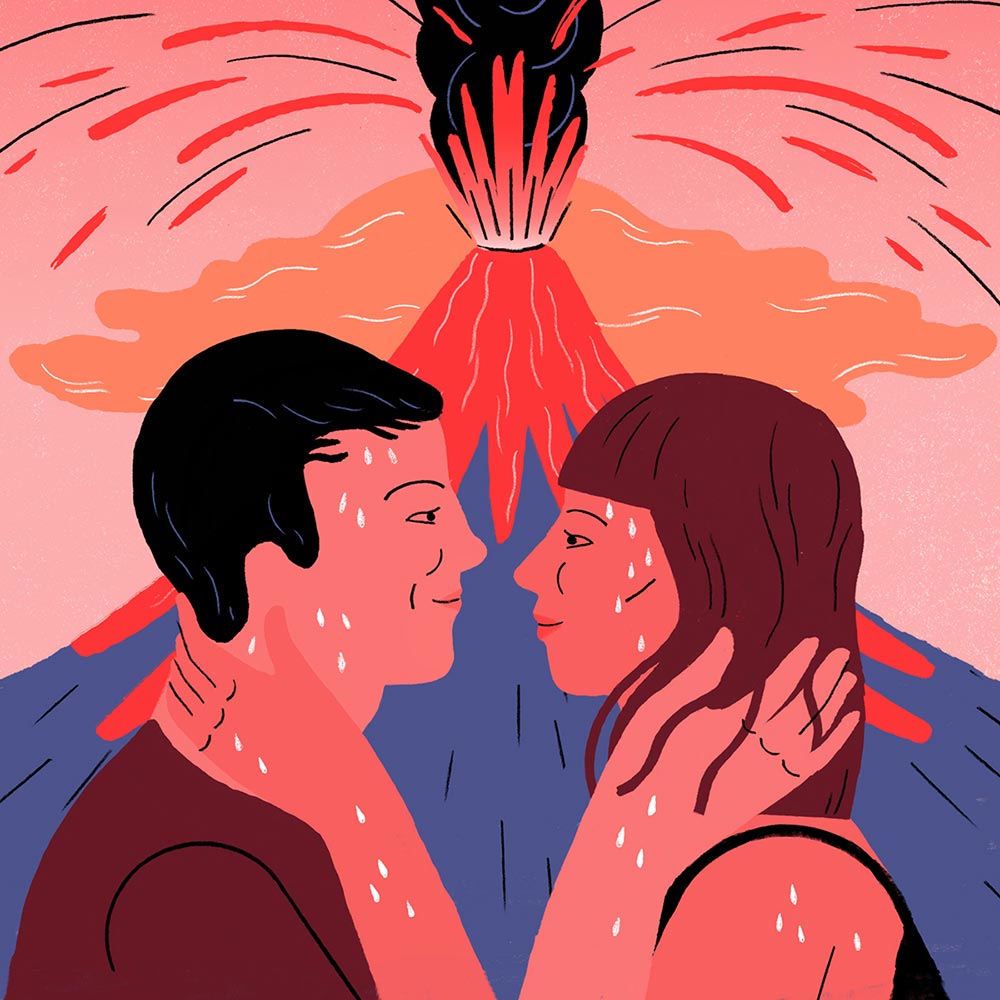 illustration: Anne-Hélène Dubray
illustration: Anne-Hélène DubrayBoth a Suspension Bridge and Mint Trick You into Feeling Happy?
The suspension bridge effect is something like a formula for falling in love with anyone under certain conditions. The TRP channel causes similar misattribution in brain.
▶Read More -
 illustration: Amélie Fontaine
illustration: Amélie FontaineReason Why We are Worrying That the Himalayan Yeti Might Have a Heatstroke
Many animals living in cold climates are homoiothermic like human beings. The TRP channel is responsible for body temperature control.
▶Read More
Pain/pungency-sensitive TRP channel
-
 illustration: Keiko Shindo
illustration: Keiko ShindoDouble Hot and Spicy Mid-summer Ramen Noodles?
There are reasons why chilis feel not only hot but pain and why hot curry feels more pungent than cold curry.
▶Read More -
 illustration: Okoto
illustration: OkotoReason Why Shower Temperature Is Important on the Summer Beach
“Ouch!” Have you ever experienced burning pain when taking a shower after being sunburned? Why do you feel pain even if water is not hot? The pain is associated with activation of the TRP channel.
▶Read More -
 illustration: TAROURYU
illustration: TAROURYUTears and Sweat Are Made of the Same Components?
In fact, tears, sweat and runny nose are made of the same components and play an important role in supporting our lives.
▶Read More
TRP channel facilitating weight reduction and body warming
-
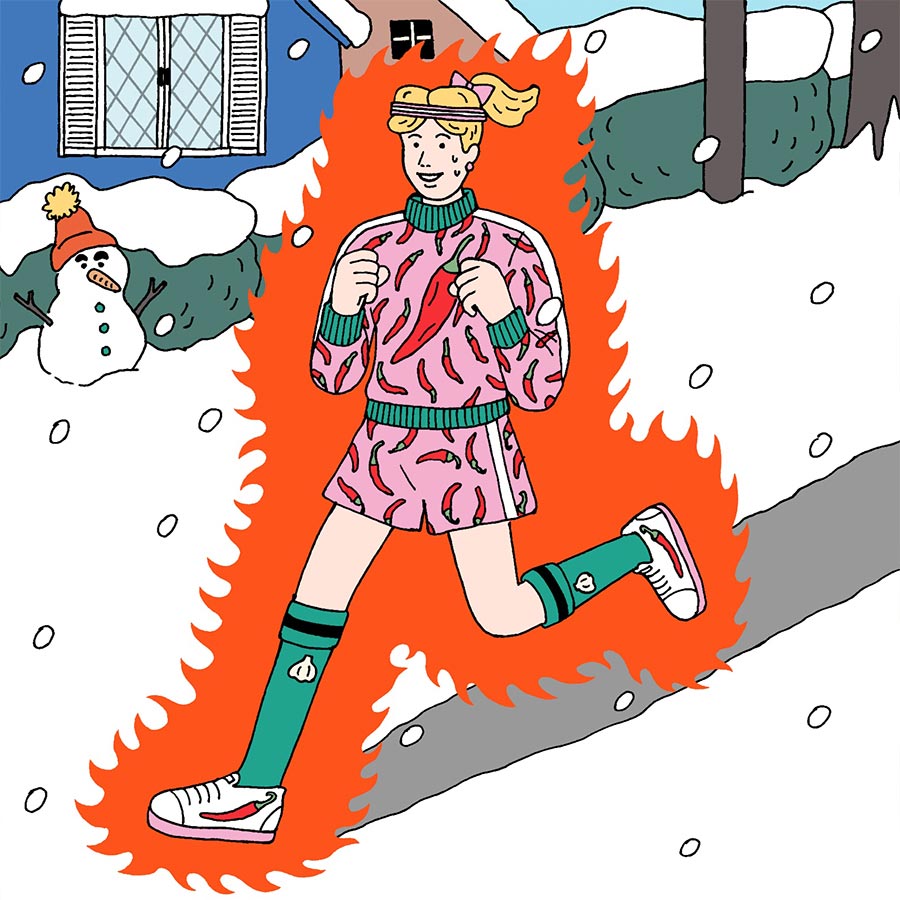 illustration: Midori Nakajima
illustration: Midori NakajimaWinter is the best season to increase your metabolism? Activate the TRP channel to burn fat
Does the cold-weather season contribute to your winter weight gain? No, it doesn’t. Winter is a better time to lose weight than summer. The TRP channel will help you.
▶Read More -
 illustration: Maiko Asano
illustration: Maiko AsanoTry “TRP body-warming” if you feel very cold
The TRP body-warming is effective to solve extreme coldness in the limbs in winter. Some food that activates the TRP channel will warm the body efficiently and keep you warm.
▶Read More
TRP channel, the key to beautiful skin
-
Secret 03
 illustration: Masami Ushikubo
illustration: Masami UshikuboWhat is TRP channel, the key to beauty!?
The TRP channel of skin cell sensors is associated with skin inflammation, which mainly causes aging of skin. Here are skin care techniques that make the most of the TRP channel activation.
▶Read More -
Secret 04
 illustration: Kayo Tamaishi
illustration: Kayo TamaishiWhat are the secrets of alum hot spring deposits of Myoban Onsen?
Myoban Onsen, which has long been known to be beneficial to the skin, was scientifically proved to contain an active ingredient. The key player is TRPM4.
▶Read More



TOPICS
- Surviving the Dreadful Heat of Summer is More Difficult Than Surviving in the Jungle!?
- Reason Why We are Worrying That the Himalayan Yeti Might Have a Heatstroke
- Double Hot and Spicy Mid-summer Ramen Noodles?
- Tears and Sweat Are Made of the Same Components?
- Summer Sports and the Fight against a Rise in Body Temperature
- Both a Suspension Bridge and Mint Trick You into Feeling Happy?
- Reason Why Shower Temperature Is Important on the Summer Beach
- Try “TRP body-warming” if you feel very cold
- Winter is the best season to increase your metabolism!? Activate the TRP channel to burn fat




